By Jan Worth-Nelson
Last year, in light of threats from an aging tree canopy in the city, the C.S. Mott Foundation contributed $208,000 to the Genesee Conservation District (GCD) to remove more than 330 dangerously cracked and dead trees in the traffic islands, medians, and “parkways” between streets and sidewalks.
Now, the foundation is granting $140,000 to replace those lost icons of the city’s urban forest. The replacement funds will pay for an initial purchase and planting of about 250 trees in the first year, with more to come, according to a press release issued this week by the Foundation.
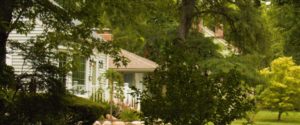
EVM file photo from the east side of Flint. (Photo by Tom Travis)
Over the winter the GCD expects to order from Branching Out Nursery in Fenton and possibly other outlets, and in the spring, truckloads of young trees of six to eight feet each will arrive around the city and planting will begin, according to GCD Administrator Angela Warren.
The GCD expects to plant 50 in the spring, 150 in the fall, and another 50 in the spring of 2023.
While the species selections depend somewhat on what the nurseries have on hand, Warren said the requests also are based on the size of the parkways — the strips of city-owned land between the street and sidewalk. Most of the species sought are either native or what she called “adapted” to Flint’s climate.
For large parkways — those 10 feet or greater of planting space, those would include swamp white oak, burr oak, silver linden, river birch, sugar maple, horse chestnut, and London plane trees.
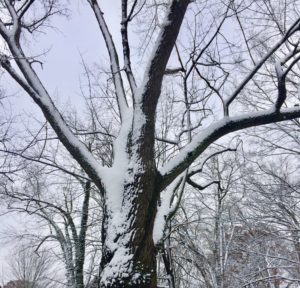
For medium parkways, five to 10 feet wide, species are likely to include hedge maple, oriental cherry, amur maple, serviceberry, and gingko.
For the smallest parkways, species selected would include Japanese tree lilac and Washington hawthorn.
She said the GCD will allocate 30 trees each to six quadrants set forth by a 2015 inventory of the city’s street trees — northwest, north central, northeast, southwest, south central, southeast. Another 70 trees will be reserved for requests from the neighborhoods.
“We need equitable distribution of the trees,” Warren emphasized, in addition to the other criteria about what to order.
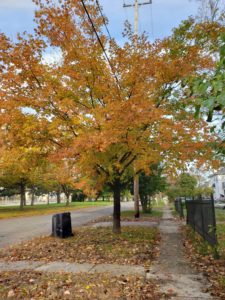
Planting sites will be selected based on many factors, such as “residents’ interest, the presence of overhead wires and streetlights, the availability of trees from nurseries, and the salt tolerance of those trees.”
Another criterion very important to the GCD is the diversity of the species. In the 20th century monocultures of trees — particularly silver maple and elm — created beautiful uniform canopies, but also made neighborhoods vulnerable to wholesale losses from pests and disease — and also, as in the College Cultural neighborhood, trees dying off all at the same time because of reaching beyond their life span.
Because of the newer understanding of these risks, the urban forest may look different, and for some residents, that may take some getting used to. Nonetheless, the result, which will take years if not decades to reach maturity, is absolutely worth it, Warren stated.
“The benefits of a vibrant urban forest are numerous,” she said. “In order to maintain a healthy urban canopy, new plantings are an essential part of the equation.
“A healthy canopy reduces reduces the amount of heat and humidity in a community, makes city streets more bike- and pedestrian-friendly, and even lowers the average driving speed,” she added.
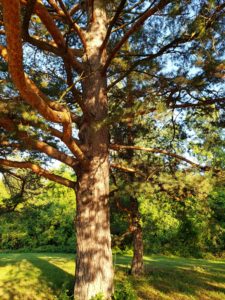
Warren said she hopes residents will help the GCD select where some of the trees are planted. She said she’d like to hear from neighborhood groups who would work with the GCD to plant trees in their neighborhood.
Residents are invited to contact the GCD via email at geneseecd@yahoo.com.
In a case of fortunate timing, Warren is advertising for a full-time forester, a person who will help coordinate and implement the upcoming planting. Information on the post is available here
According to the tree inventory produced by an independent contractor in 2015 there were about 29,000 street trees in Flint. Now, that number is about 26,000, “and there’s still work to be done to remove those that are dead and dangerous, as well as to plant new trees throughout the city,” according to the Mott press release.
The 2015 data is available here on the City of Flint Planning Department website,
Since 2015, more than 3,900 street trees have been removed and more than 1,600 have been trimmed by the GCD and the City of Flint Street Maintenance Department, according to the press release.
In replacement over the same period, the GCD has planted 600 street trees and 2,400 trees in public parks and other green spaces.
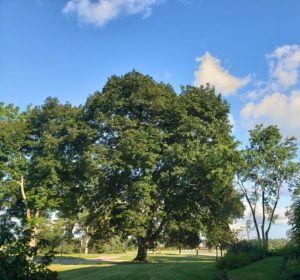
There’s a lot of tree-love and attention to trees in the city, according to C.S. Mott Foundation President and CEO Ridgway White.
“During our Focus on Flint community conversation, residents expressed concerns over problem trees in their neighborhoods,” White stated. “So it was great to see so much progress on tree removal over the past year.
“But residents also told us they wanted to see new trees planted, and we’re happy to support that, too,” he said. “We hope the trees will contribute to the beautiful and vibrant neighborhoods Flint residents want and deserve.”
Warren said it takes one to four people to plant each tree — digging the hole, lifting in the tree, making sure it’s straight, watering it properly — many are quite heavy, and it’s very physical work, she noted.
That work will be contracted out, she said — not consigned to volunteers. The trees will be guaranteed for one year, and protections will be put in place to try to get them off to a good start.
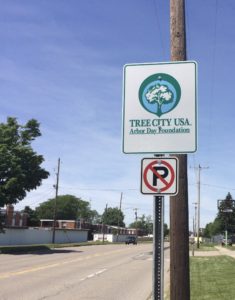
For more than 20 years, Flint has won the designation of “Tree City USA” from the Arbor Day Foundation. Warren said she has just completed the application to maintain the recognition for another year–including documenting how much money has been spent or removing dead trees and planting replacements, along with city ordinances assuring the care of trees. If Flint’s designation is renewed, it would be declared by proclamation of the Mayor on Arbor Day, the fourth Friday in April. Twelve signs posted around the city already indicate that Flint is a Tree City.
The GCD currently has a staff of eight and a variable yearly budget of between $750,000 and $1 million. Funds come from a combination of foundation grants, city, state and federal sources, Warren said. The GCD is one of 75 conservation districts in the state.
EVM consulting editor Jan Worth-Nelson can be reached at janworth1118@gmail.com.

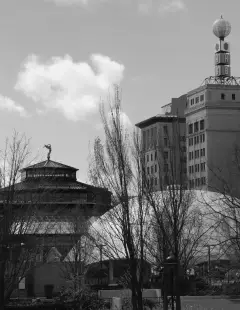
You must be logged in to post a comment.